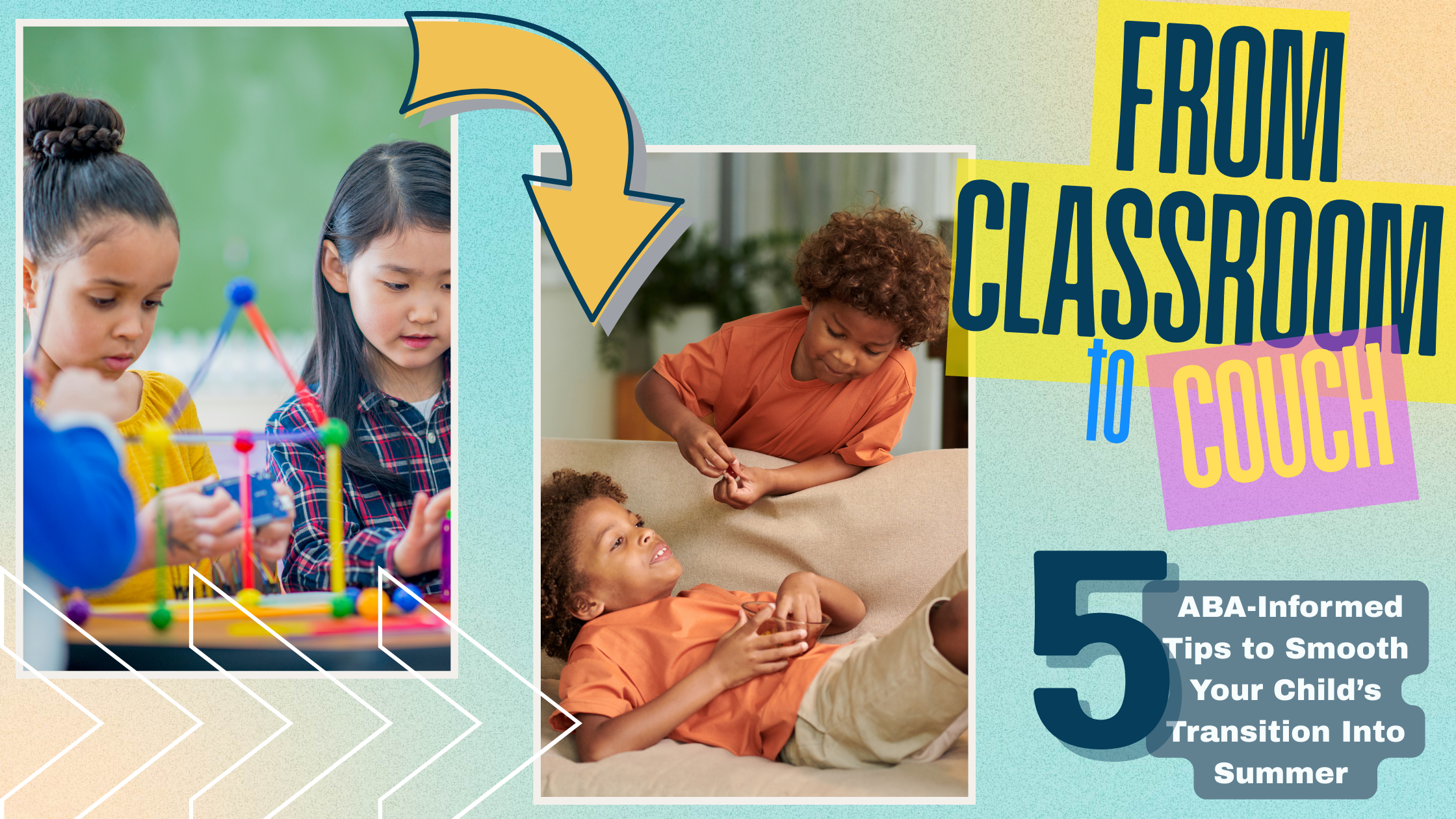From Classroom to Couch: 5 ABA-Informed Tips to Smooth Your Child’s Transition Into Summer
May 23, 2025

The countdown is on—backpacks are sagging, school calendars are thinning out, and somewhere in the distance, you can hear the ice cream truck gearing up for its annual summer tour. ☀️
But for many kids—especially those who thrive on routine—the transition from school to summer break can bring more than just sunshine. It can bring big feelings, tricky behavior, and emotional speed bumps that leave families feeling frazzled before summer even begins.
Whether your child is a transition pro or tends to struggle with changes, a few ABA-informed strategies can help make this shift smoother, calmer, and even (dare we say) joyful.
Here are five tried-and-true tips that combine behavioral science with real-life parenting to help your child ease into summer break:
1. Talk About It Early 🗣️📆
Don’t wait until the last day of school to drop the summer bomb. Start talking about the change now.
Use clear, simple language to explain when school is ending and what will happen next. Many children benefit from visual supports—think visual calendars, social stories, or picture schedules to outline what to expect.
🧠 ABA Tip: Preparing kids ahead of time helps reduce anxiety by giving them time to process the change. It sets the stage for smoother transitions and better emotional regulation.
2. Count It Down 🧮
Time can be abstract for kids, especially when they’re anticipating a big change. Create a countdown system they can interact with—like:
- A paper chain they remove a link from each day
- A sticker chart
- A “days left” calendar they can cross off
🔁 ABA Tip: This builds in repetition, predictability, and a sense of control. You’re helping their brain prepare for what’s coming—instead of it feeling like a surprise.
3. Keep Some Structure ⏰
Total freedom sounds like every kid’s dream… until everyone’s sleep-deprived, over-snacked, and melting down by 11 a.m. 🙃
While summer is definitely more relaxed, keeping light structure helps kids feel secure. Anchor the day with consistent wake times, meal routines, and a set bedtime.
🔄 ABA Tip: Consistent routines support regulation, prevent behavioral challenges, and help children maintain skills they worked hard to develop during the school year.
4. Preview Summer Plans 🏕️🧃
Whether it’s camp, therapy sessions, vacations, or just lounging at home—talk about it ahead of time. Use photos, storyboards, or weekly calendars to preview what’s coming.
Even spontaneous activities can be framed within the structure of a schedule board that says “surprise fun activity!”
📸 ABA Tip: Visual aids aren’t just cute—they’re powerful tools that help kids mentally rehearse what’s ahead, reducing uncertainty and anxiety.
5. Celebrate the Change 🎉
Transitions don’t have to be scary—they can be something to celebrate! Plan a “last day of school” party, have a pajama breakfast, or let them pick the dinner menu.
Framing change as something positive can shift your child’s emotional response—and build resilience for the next big transition.
🎈 ABA Tip: Pairing change with reinforcement helps build positive associations and increases future success with transitions.
Summer Doesn’t Have to Mean Chaos
A little preparation can go a long way. These simple, proactive strategies are rooted in behavioral science and customized for real life—because we know your summer doesn’t come with a pause button.
Helping your child ease into this next chapter not only supports their emotional well-being but sets the tone for a summer filled with connection, fun, and growth.
Looking for more support? Check out our free Summer Tool Kit with resources to get you started. 🌟
